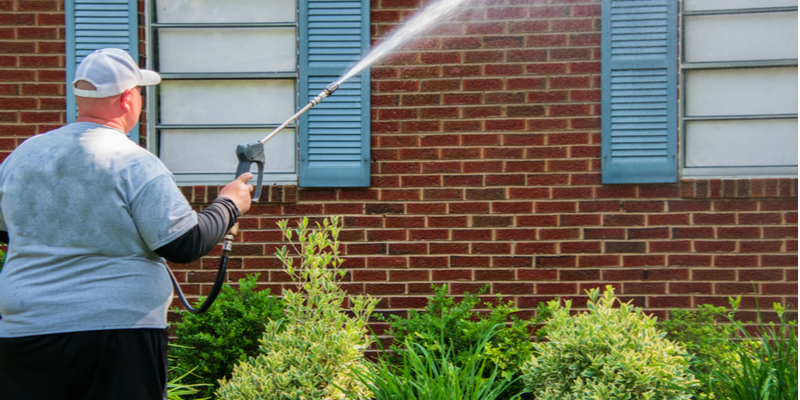
Pressure washing is all about blasting away grime with high-powered water—but is water alone enough? Or do you actually need to use soap or detergent to get the job done right?
Here’s the deal: You don’t always need soap—but in many cases, it makes a huge difference. While plain water can remove loose dirt, soap helps break down tough grime, grease, mold, mildew, and other clingy messes that water alone might miss. 🧽✨
Let’s break down when, why, and how to use soap effectively with your pressure washer—so you get cleaner results with less effort.
💡 When Water Alone Might Be Enough
If you’re just rinsing off:
- Dust or pollen from a deck or patio
- Loose dirt from concrete
- Mud or light grime on siding
Then plain water under pressure may be totally sufficient. In these situations, using soap might just be overkill.
But here’s where things get tricky—some stains and residues cling to surfaces and require more than just H2O. That’s where detergent becomes a game-changer. 🔬
✅ When You Should Definitely Use Soap
Soap makes a major difference in these scenarios:
- Greasy or oily surfaces (like driveways or garages)
- Mold or mildew buildup on siding or fences
- Heavy grime on outdoor furniture or decking
- Cleaning roofs (soft washing often relies on detergents)
- Washing painted surfaces you want to clean without damaging
Why? Because soap contains surfactants—compounds that break the bond between the dirt and the surface, lifting the grime so it can be rinsed away. 💥
🧴 Choosing the Right Soap or Detergent
Not all soaps are created equal. Here’s how to choose the right one for your job:
1. Pressure Washer-Safe
Only use soaps labeled safe for pressure washers. Household dish soap or degreasers can damage internal parts or void your warranty.
2. Surface-Specific
Choose detergents based on what you’re cleaning:
- Concrete cleaners for driveways
- Vinyl or house wash for siding
- Wood cleaners for decks or fences
- Mold and mildew removers for algae or mildew spots
✅ Many cleaners are biodegradable and safe for plants—look for those if you’re concerned about runoff.
Browse Amazon Here For Popular Power Washing Detergents
🧼 How to Use Soap with a Pressure Washer
There are a few ways to apply soap, depending on your machine:
1. Built-In Soap Tank
Many residential pressure washers have a soap reservoir. Fill it with your detergent, and attach the soap nozzle (usually black) to apply.
2. Foam Cannon or Soap Injector
For deeper cleaning, use a foam cannon that attaches to your wand. This sprays thick, clingy foam for better dwell time on vertical surfaces.
3. Bucket and Brush
For delicate surfaces or spot-treating, apply soap with a soft brush before rinsing with the pressure washer.
🕒 Let the soap sit for 5–10 minutes before rinsing—but don’t let it dry on the surface, as that can cause streaks or residue.
🚫 Mistakes to Avoid
- Using the wrong nozzle – Soap only sprays using the low-pressure nozzle, not with high PSI tips
- Applying soap in direct sunlight – It can dry too fast and leave streaks
- Forgetting to rinse plants or grass – Some detergents can burn vegetation
- Not rinsing thoroughly – Leftover soap can leave a film or damage surfaces over time
Clean in the shade or on cooler days when possible. 🌥️
🧠 Final Thoughts
So, do you need soap when pressure washing? Not always—but if you’re tackling grease, mold, or deep-set grime, soap makes the job easier, faster, and more effective. 💪🧼💦
To recap:
- ✅ Use soap for oily, grimy, or moldy surfaces
- ❌ Skip it for light-duty rinses or dusty areas
- 🧴 Always use pressure washer-safe, surface-appropriate cleaners
- 🧽 Let soap sit briefly before rinsing for best results
Soap isn’t a must every time—but in many cases, it’s your secret weapon for sparkling clean results. 🎯🧽✨






